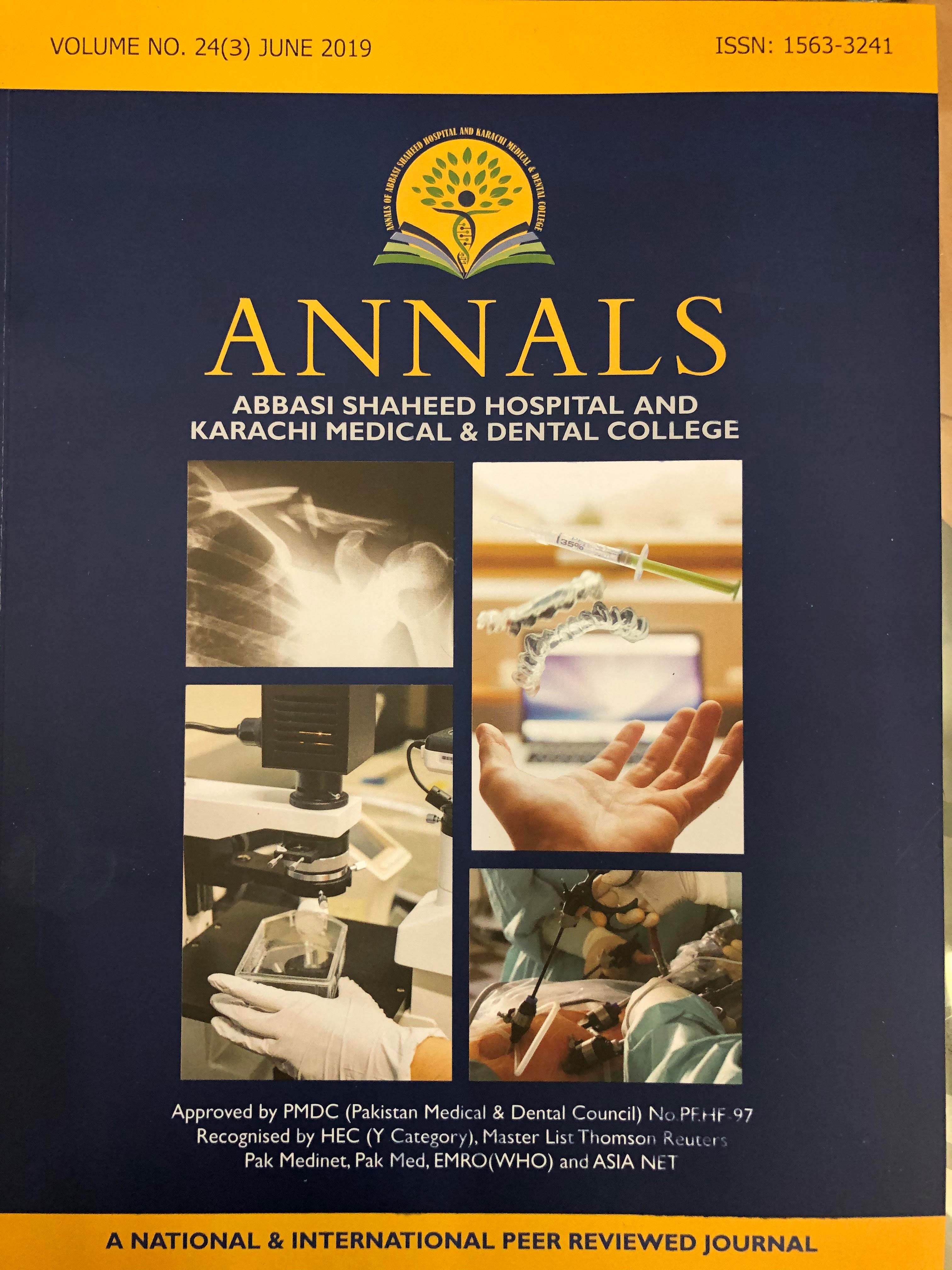Comparison of Irrigation with Povidone-Iodine Versus Normal Saline on Wound Infection After Open Appendectomy
DOI:
https://doi.org/10.58397/ashkmdc.v24i3.6Keywords:
Wound infection, appendectomy, povidone-iodine.Abstract
Objective: Surgical site infections (SSIs) pose a continued problem to operating surgeons. It adds to the healthcare cost, increases morbidity and mortality and sometimes culminates in re-explorations. Rate of SSIs can be ameliorated by removing damaged or non-viable tissue, metabolic waste and wound exudates; this can be achieved by irrigation of surgical wound intraoperatively. Surgical wound irrigation can also be performed postoperatively. Even after giving prophylactic antibiotics and august aseptic measures, post-appendectomy wound infection remains soaring. The efficacy of povidone-io- dine on non-incised skin is well known but its application as an intraoperative irrigation solution in open surgical wounds is not a mundane practice. Likewise prophylactic irrigation with normal saline solution to prevent wound infection has also turned out to be effective in some studies. The objective of this study is to compare the percentage of superficial SSI post-appendectomy, with intraoperative irrigation of subcutaneous plane using 1% povidone-iodine solution versus normal saline.
Methods: 200 cases of open appendectomy for acute appendicitis at Baqai Medical University, Kara- chi were randomly distributed into two arms. In group A, 0.9% Normal Saline was employed to irrigate subcutaneous tissue before skin closure while in group B irrigation with 1% diluted povidone-iodine solution was undertaken. The cases were assessed for infection in surgical wounds in line with Southampton wound grading system for five days after surgery and followed for thirty days.
Results: Mean age of participants of this study was 18.65 years. There were 100 patients in both groups and the groups were not different statistically in terms of age, gender and operative findings. A total of 38 (19%) out of 200 patients had Southampton grade 2 and above, signifying wound infection. Out of these, 29 (29%) were from Group A and 9 (9%) from Group B (p=0.001).
Conclusion: 1% diluted povidone-iodine irrigation of subcutaneous plane after appendectomy remark- ably lowers the rate of SSI when compared with normal saline irrigation.
Downloads
Published
Issue
Section
License
Annals of Abbasi Shaheed Hospital and Karachi Medical and Dental College acquires copyright ownership of the content. The articles are distributed under a Creative Commons (CC) Attribution-Non-Commercial 4.0 License (http://creativecommons.org/licenses/by-nc/4.0/). This license permit uses, distribution and reproduction in any medium; provided the original work is properly cited and initial publication in this journal.



